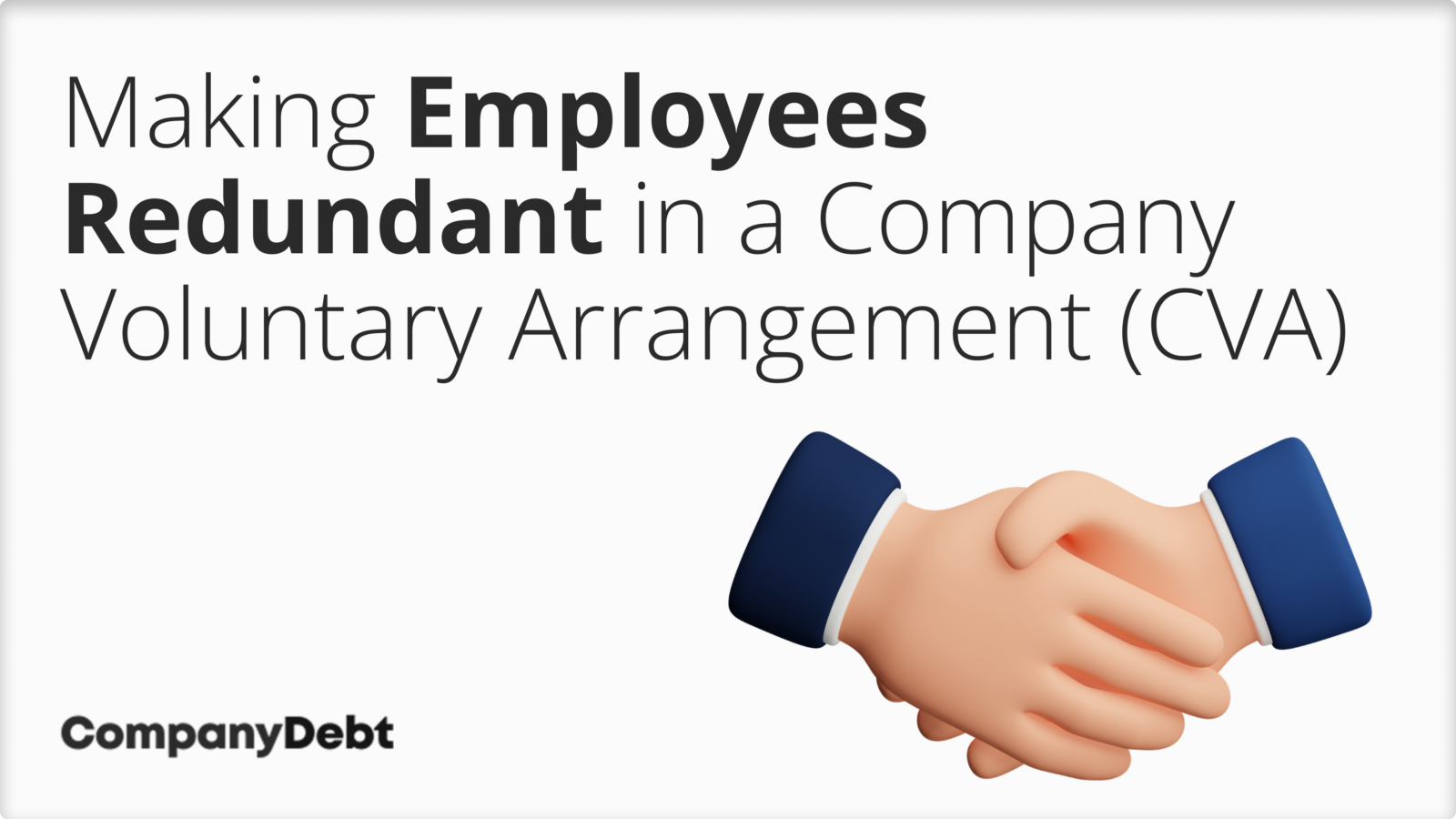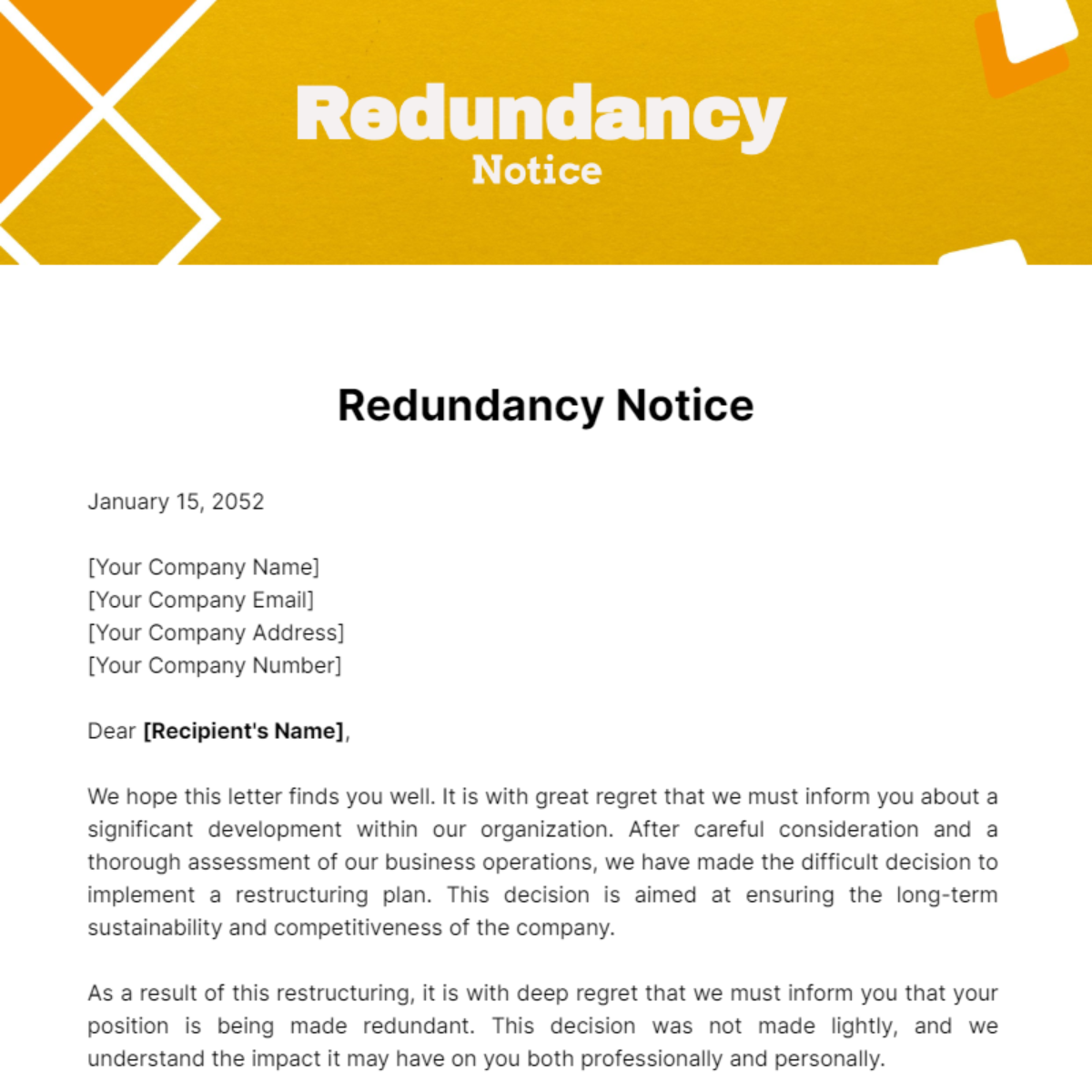Redundancy Pay If Company Goes Bust: Comprehending Your Privileges in the UK
Redundancy Pay If Company Goes Bust: Comprehending Your Privileges in the UK
Blog Article
Exploring the Interaction Between Company Redundancy and Business Flexibility for Future Development
In the dynamic landscape of today's service world, the detailed connection in between business redundancy and business adaptability arises as an important factor for sustained growth and success. Firms often deal with the difficulty of striking a delicate equilibrium in between keeping a degree of redundancy to reduce dangers and promoting adaptability to react promptly to the ever-evolving market needs.
Value of Firm Redundancy
Company redundancy is an important aspect that boosts business strength and minimizes functional risks. By integrating redundancy measures within the organizational structure, business can better hold up against unexpected interruptions and variations in business environment. Redundancy functions as a calculated buffer, enabling firms to adjust and respond efficiently to unanticipated obstacles without jeopardizing necessary operations.
One secret aspect of the significance of company redundancy is its function in making certain continuity during times of crisis. When confronted with unexpected changes or emergencies, repetitive systems, sources, or personnel can action in to maintain crucial functions and prevent widespread disruptions. This connection not only safeguards the firm's online reputation and customer count on but also reduces financial losses and functional downtime.

Strategies for Organizational Flexibility

Creating adaptable organizational structures that enable for fast changes to market dynamics and client requirements is necessary for staying affordable in a quickly progressing environment. By proactively identifying prospective interruptions and possibilities, companies can proactively adjust and grow in an ever-changing company landscape.
Balancing Redundancy and Adaptability
Attaining a harmonious equilibrium between operational redundancy and organizational adaptability is paramount in browsing the intricacies of a dynamic business environment. Redundancy within a business offers a security net, making sure connection and security in procedures. Nevertheless, an extra of redundancy can cause inefficiencies and hinder flexibility to changing market problems. On the other hand, organizational flexibility enables firms to react quickly to external disturbances and seize new chances. Striking the appropriate balance in between redundancy and versatility is a fragile process that calls for a deep understanding of the company's objectives, sector dynamics, and risk resistance.
To achieve this equilibrium, companies require to conduct routine evaluations of their procedures to recognize locations where redundancy is necessary for danger mitigation and where flexibility can drive innovation and development. Implementing flexible frameworks, top article promoting a society of constant learning and renovation, and urging open interaction across all degrees of the company are essential approaches to harmonize redundancy and flexibility effectively. By lining up these two critical elements, business can position themselves for lasting growth and success in an ever-changing service landscape.
Study on Adjustment Success
In taking a look at instances of effective business adaptation, it comes to be noticeable that the interplay between functional redundancy and versatility is a defining consider forming resistant companies. One engaging situation research study why not try here is that of Netflix. At first a DVD rental solution, Netflix showed exceptional flexibility by transitioning into a streaming system when digitalization interfered with the industry. By tactically buying innovation and content creation, Netflix not only flourished however endured in a swiftly developing market. One more standout example is Amazon. Beginning as an on-line book shop, Amazon continually adjusted its service version, broadening right into varied industries such as cloud computer and expert system. This versatility permitted Amazon to stay ahead of competitors and fulfill altering consumer demands. Last but not least, Adobe gives a notable image of effective adjustment. The firm changed from selling software application licenses to a subscription-based version, making sure repeating profits streams and enhanced consumer interaction. These study underscore the significance of functional redundancy combined with organizational versatility in fostering lasting development and competition.
Building Resilience for Future Growth
Structure strength for future growth needs a strategic alignment of operational processes with market dynamics and emerging patterns. Business should adapt to transforming environments by promoting a culture of flexibility, development, and constant enhancement.
Furthermore, promoting solid connections with stakeholders, such as clients, workers, distributors, and the community, is crucial for weathering unpredictabilities and keeping count on and assistance during unstable times. Effective communication and transparency play an important function in structure strength, as they help line up expectations and help with cooperation in browsing uncertainties.
In addition, organizations require to focus on understanding and development campaigns to upskill employees and furnish them with the necessary tools to adjust to changing conditions. By buying their workforce, business can improve their versatility and dexterity, eventually reinforcing their strength for sustainable future development.
Conclusion

In the dynamic landscape of today's company world, the intricate partnership in between firm redundancy and business flexibility arises as a vital element for continual growth and success. Business typically deal with the challenge of striking a fragile equilibrium in between preserving a level of redundancy to minimize dangers and fostering flexibility to react swiftly to the ever-evolving market needs.To achieve this balance, companies require to perform normal evaluations of their operations to determine locations where redundancy is necessary for danger mitigation and where versatility can drive innovation and development.In final thought, the interplay in between business redundancy and organizational versatility is critical for future growth. Structure durability through a combination of redundancy and flexibility will make certain that firms are prepared for the challenges of the future.
Report this page